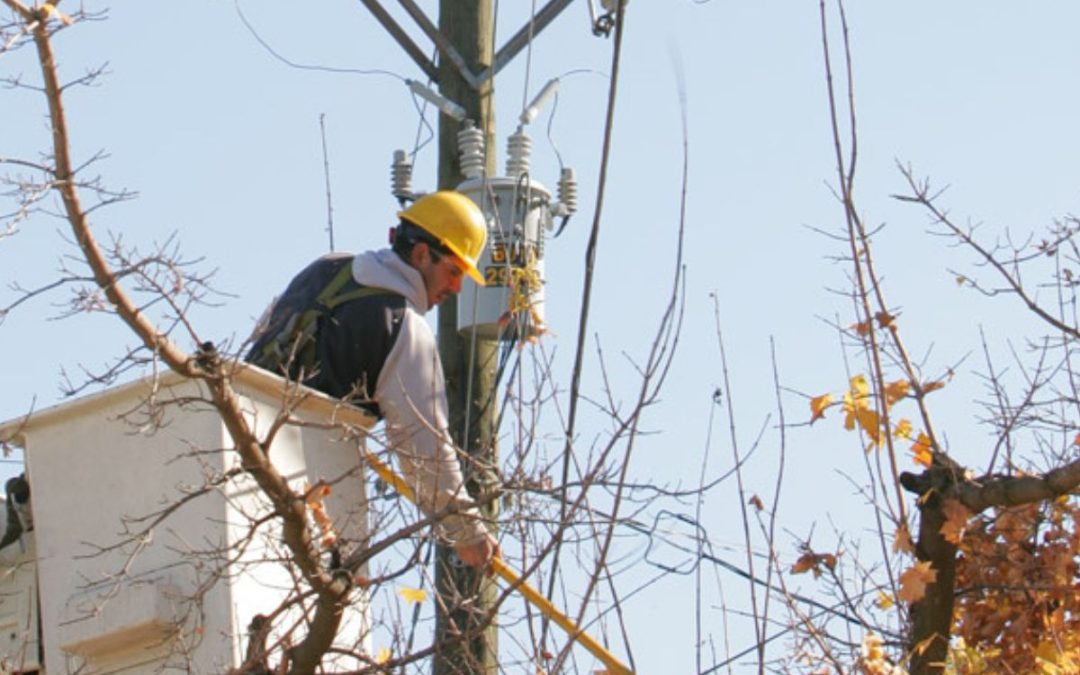Line clearance tree trimming is a delicate operation, and you must know exactly what you’re doing. It can result in a power outage if the tree touches a power line. In addition, this work is dangerous and can result in fatalities for the workers. If you don’t know what you’re doing, you should consult a professional tree service.
Is it safe to trim trees around power lines?
It is very important to keep a safe distance from power lines, particularly when pruning trees. You should avoid trimming them within 10 feet of the lines. For more safety, consider having the trees trimmed by a professional. The distance between the trees and the power lines should be about 50 feet or more.
The power grid is a complicated system. Working around it requires specialized training and knowledge. Ensure that the employees working around power lines have adequate safety training. They should have a second employee within voice communication range at all times. Additionally, the employees should maintain a minimum approach distance of 10 feet or more.
It is illegal to cut trees within 10 feet of power lines in Massachusetts. This can disrupt the power supply and cause problems. Only qualified and OSHA-certified line clearance workers should be trimming trees around power lines. This is for safety reasons and to keep the electrical safety guidelines in place.
While cutting trees around power lines is a common practice, there are several hazards involved. Electricity can arc from the power line to the tree, and this can be deadly. Electricity can also cause an electrical fire if a branch or pruning tool touches a wire.

Is it okay for trees to touch power lines?
A tree branch touching a power line can cause a fire or electrocution. The electricity is transmitted through the tree via an arc from the line to the tree. It is important to keep a safe distance from power lines and avoid using ladders and long handled cutting tools near power lines. This way, you can prevent an accident. Tree branches touching power lines are not uncommon, but you should always be aware of the dangers of doing so.
The dangers of trees near power lines are numerous and can be life-threatening. The most dangerous ones are fire and electrical hazards. Even if the tree does not touch the power lines, electricity can arc from the power lines to nearby trees. This can cause a fire or even kill a person.
Before you begin planting a tree, make sure it does not touch a power line. Power lines contain voltage 100 times higher than the electrical current in your home, and touching a branch from a tree can result in a fatal electrocution. To avoid this problem, government regulations require that you stay at least 10 feet away from power lines.

How much voltage is in a residential power line?
The voltage in a residential power line is 120V or 240V. Generally, this voltage is regulated to a certain range, depending on the type of electrical appliances in a home. The voltage of power lines can be measured with an electrical meter. Previously, most homes used analog meters and meter readers would check them periodically. Today, there is smart grid technology that has replaced many residential meters with digital devices. The meters can communicate with the power company and can alert them to power outages.
To avoid any potential electrical injury, it is advisable to avoid building close to power lines. Medium-voltage lines, for example, may consist of three or six separate wires. However, single-wire lines can also be dangerous. As a result, people should never approach these lines from three meters away. If they do, they could sustain an electric shock or even electrocute themselves. Power lines can also be a source of dangerous voltage if there’s a defect in the transformer.
Power lines that travel between a substation and a home or business are called distribution lines. They usually have a voltage of 2,000 volts or less, but higher voltage lines are also common. The voltage of a line is easily determined by measuring its distance off-center from adjacent structures. For example, if a tower leans to one side, it is likely carrying 115 kV power.

What does pink paint on trees mean?
When you see pink paint on trees, you might wonder what it means. The paint on a tree may be a signal for logging operations, a sign that the area is off limits to logging activities, or a warning that a tree is marked for harvesting. But it can also have several other purposes, including warning other trees about a disease outbreak or boundary. In some cases, it may be simply to highlight an insect infestation. In other cases, it may even deter certain borers.
The markings on trees are different colors, depending on what they mean. For example, pink paint on a tree that is not marked by a no-trespassing sign might mean that a PG&E contractor is trimming the tree. A tree that is marked with purple spray paint, on the other hand, means that trespassing is prohibited. These markings are often used on boundary lines.
In the U.S., “Tie a Yellow Ribbon Round the Ole Oak Tree” is one song that tops pop charts, and yellow ribbons have long been symbols of support for the departed. Similarly, the “blue tree” project, which started in Western Australia, encourages people to paint dead trees blue. This project is dedicated to the memory of a friend who died of depression. Sometimes, white paint is also painted on a tree.
Can electricity jump from power lines?
You can be electrocuted if you come into contact with a downed power line. The best way to prevent this situation is to avoid touching it and call 911 immediately. Power lines are not insulated, and even if they are disconnected, electricity can jump from them and cause an electric shock.
A car accident or severe weather can damage power lines. A squirrel can even cause damage. Birds, however, can sit on them without being harmed. In any case, it is advisable to be at least 10 feet away from a power line. If you are unsure of your safety while working near one, contact your local Blue Ridge district office.
Electricity is extremely dangerous, and while some power lines are coated, they are still deadly if contacted. When it comes to electricity, even a small tree can contact a high voltage power line. The electricity that jumps can cause injury, fire, or damage to property. When electricity jumps from a power line, it follows the easiest path to the ground.
Can I remove a branch from a power line?
A branch on a power line is a risky situation. Even though it may not pose a danger to you, the weight of the branch could cause contact with the wires. Branches should be trimmed regularly to avoid interfering with power lines.
Before attempting to cut the branch, contact your power company to see if it is safe. You will need a qualified arborist to safely prune the tree. Make sure you get an arborist who is certified to work around power lines. Never prune a tree closer than 10 or 15 feet away from a power line. If you do attempt to do it yourself, you could risk being held responsible for any damage.
Never attempt to cut or remove a tree branch near a power line without the proper training. Professional workers are trained to do this and have special equipment to prevent electric shock. If you do try to cut a branch from a power line, you’ll risk electrocution and damage to your home.

